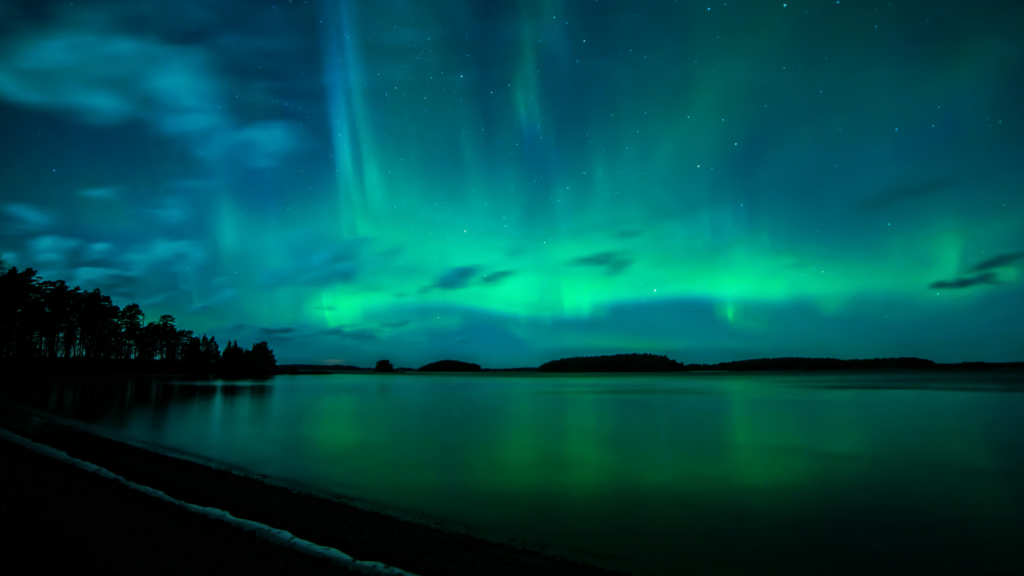
Aurora Borealis 101: The Science Behind the Stunning Light Show
Have you ever gazed up at the night sky and witnessed a mesmerizing light show of vivid colors dancing across the darkness? If so, chances are you were lucky enough to witness one of nature’s most awe-inspiring displays: the Aurora Borealis. But what exactly causes this stunning phenomenon?
In this blog post, we’ll explore the science behind these mystical lights that have captivated people for centuries. Get ready to delve into some fascinating facts about the Aurora Borealis!
What is Aurora Borealis?
Aurora is the Latin word for “northern lights.” These stunning light shows can be seen in parts of the Earth’s high latitude, most notably in the Arctic and Antarctic. They are caused by charged particles from the sun interacting with the atmosphere.
Aurora borealis is the common name for the light display in the high latitude regions, while Aurora australis is the term used for the light show in the lower latitude regions.
Where is Aurora Borealis Found?
Aurora Borealis is a mesmerizing light show that can be seen in the sky during the winter season. The aurora is created when energetic particles, called cosmic rays, collide with Earth’s atmosphere. These powerful rays create an array of colourful lights in the sky.
The aurora is located near the north pole and can be seen most clearly during the night. It usually lasts around 30 minutes, but it can last up to several hours in some instances.
How is Aurora Borealis Formed?
The aurora borealis, or northern lights, is one of the most enchanting and breathtaking light shows in the world. This light is created when energetic particles called electrons and protons interact with oxygen and nitrogen gases in the Earth’s atmosphere. Auroras are often seen as a sign of good luck in some cultures, and they can be quite beautiful to watch.
Auroras can be seen in all parts of the world, but they are most often visible in high latitudes. This is because the Earth’s magnetic field shields the lower latitudes from the most intense auroras.
What Causes Aurora Borealis?
The physics behind auroras is complex, but the main cause is charged particles, such as electrons and protons, entering the Earth’s atmosphere from the sun. When these particles collide with molecules in the atmosphere, they create colourful light displays.
There are several factors that can affect the colouring of an aurora. The density of particles in the atmosphere, called the magnetic field, can also play a role. Changes in the sun’s activity can also cause variations in the number and intensity of these charged particles.
More Facts About Aurora Borealis
The Northern Lights are one of the most photographed and viewed natural phenomena in the world. They are also one of the most mysterious, as we still don’t fully understand their origins and how they work.
The Aurora Borealis (or The Northern Lights) is actually a designation given to a wide variety of lights seen in the night sky, many of which can be seen over parts of North America, Scandinavia, Russia, Alaska, and Canada. These lights can be seen under different names depending on where you are viewing them from: Eskimo Circles in Alaska; The Red Light of Siberia; The Cairngorms; The Diamond Ring; The Rainbow; or Boreal Lights.
There are several theories about how these amazing displays are formed. One theory suggests that sunlight reflects off particles in the Earth’s atmosphere called electrons and ions. When these tiny particles collide with each other, they create molecules called photons. This process creates light and makes up what’s known as Aurora Borealis.
Another theory suggests that when the Earth’s magnetic field lines intersect with charged particles in the upper atmosphere, they can cause energetic light displays called Auroras. Auroras occur in all directions from the North Pole and change colours depending on their location and time of year – from red during winter to green during summer.
Regardless of the theory, it’s clear that The Northern Lights are one of nature’s most breathtaking displays and something that everyone should see at least once in their lifetime.
The Aurora Borealis is one of the most stunning natural wonders on Earth. Unfortunately, many people are unaware of just how amazing this light show can be. However, with just a little bit of knowledge, you can experience this beautiful light show for yourself!



